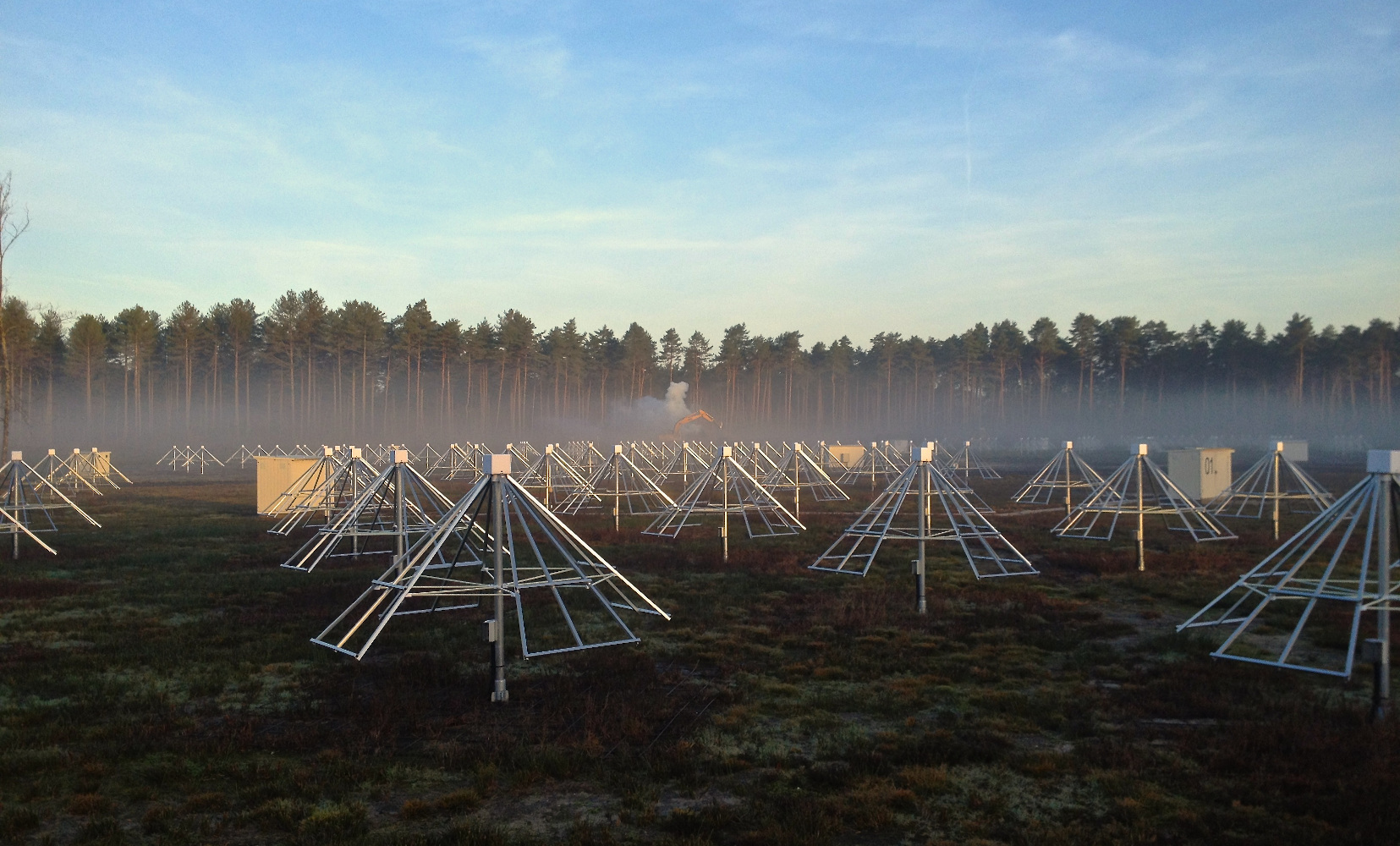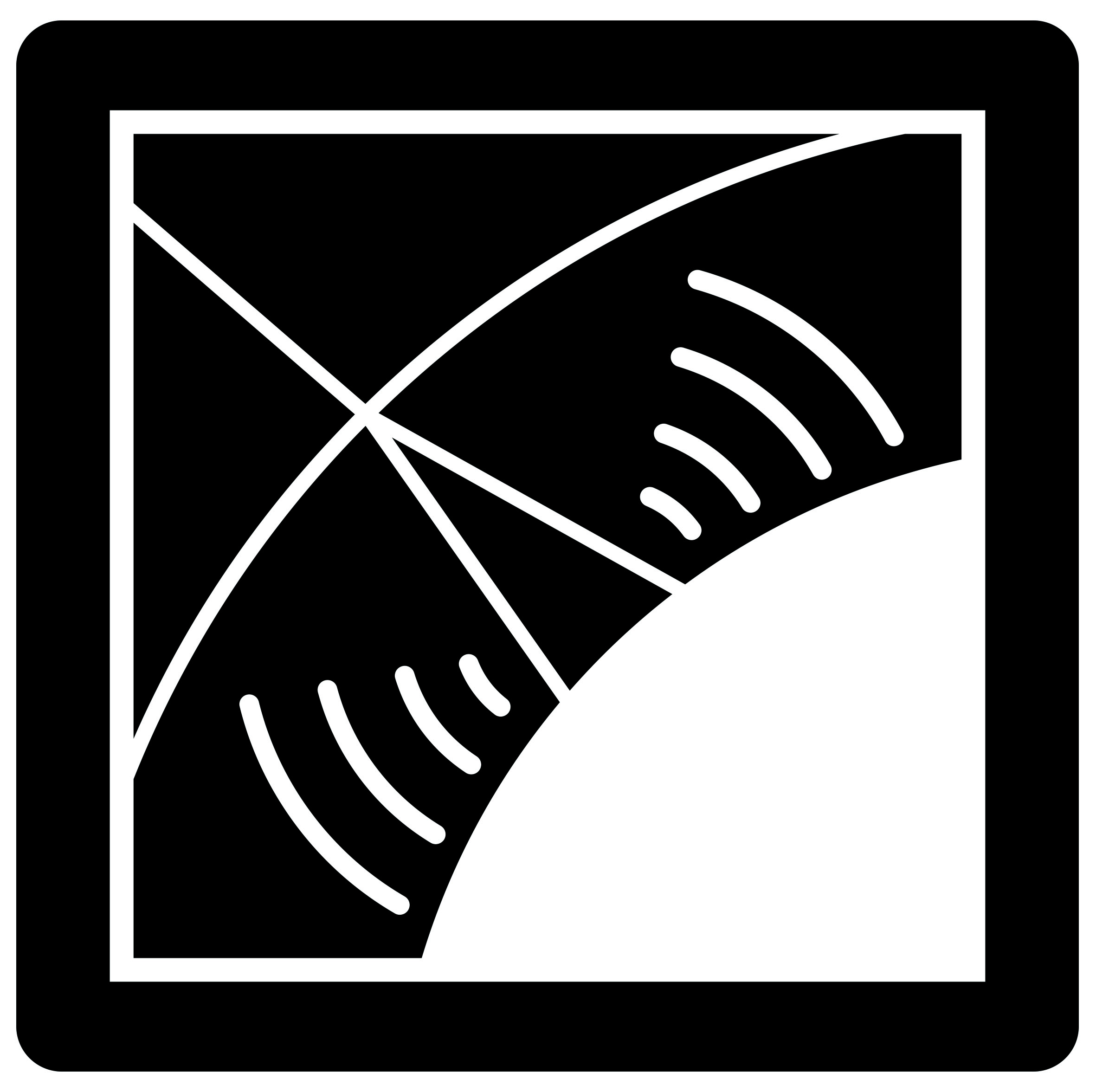NenuFAR
Located on the site of the Nançay Radioastronomy Station, which gathers in the heart of Sologne French radio telescopes observing at frequencies ≤ 3 GHz, NenuFAR is a very large low-frequency radio telescope, which will be among the most powerful in the world in its frequency range between 10 MHz and 85 MHz.
 View of some NenuFAR mini-array antennas, identical to those of the CODALEMA compact Array.
View of some NenuFAR mini-array antennas, identical to those of the CODALEMA compact Array.
This range corresponds to the lowest spectral “window” in which we can observe with radio telescopes from the surface of the Earth. NenuFAR, optimized for the frequency range from 10 MHz to 85 MHz (wavelength λ from 4 m to 30 m), will have there the best sensitivity. NenuFAR in its final configuration will exploit 1824 antennas in dual, crossed polarisation, arranged in 96 mini-arrays (MA) of 19 antennas each and spread over an approximative circle of diameter 500 m. This dense core will be complemented by 6 MA at 3 distant locations to enhance the imagery capabilities of the radiotelescope. The individual NenuFAR antennas are the same that are used on the CODALEMA Compact Array and hold the LONAMOS LNA developed for CODALEMA.
Its main scientific objectives are:
- the detection and study of exoplanets (planets orbiting stars other than the Sun) in radio;
- detection of the radio signal of the “Cosmic Dawn” (epoch of formation of the first stars and galaxies), some 100 million years after the Big Bang;
- the study of pulsars (hyperdense and strongly magnetized dead stars in rapid rotation) at low frequencies.
NenuFAR will also allow many other studies: radio emissions from eruptive or magnetized stars, galaxies and clusters of galaxies, spectral lines in the interstellar medium, planetary lightning, radio bursts from Jupiter’s magnetosphere, the Sun, and various sources still unknown (perhaps including radio signals related to catastrophic events causing the emission of gravitational waves). Of specific interest for CODALEMA is the radioGamma key program, that was proposed by members of the Astroparticle group of Subatech to take benefit of the surrounding CODALEMA facilities. More on https://nenufar.sciencesconf.org.

